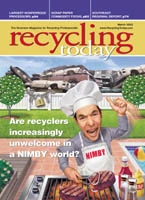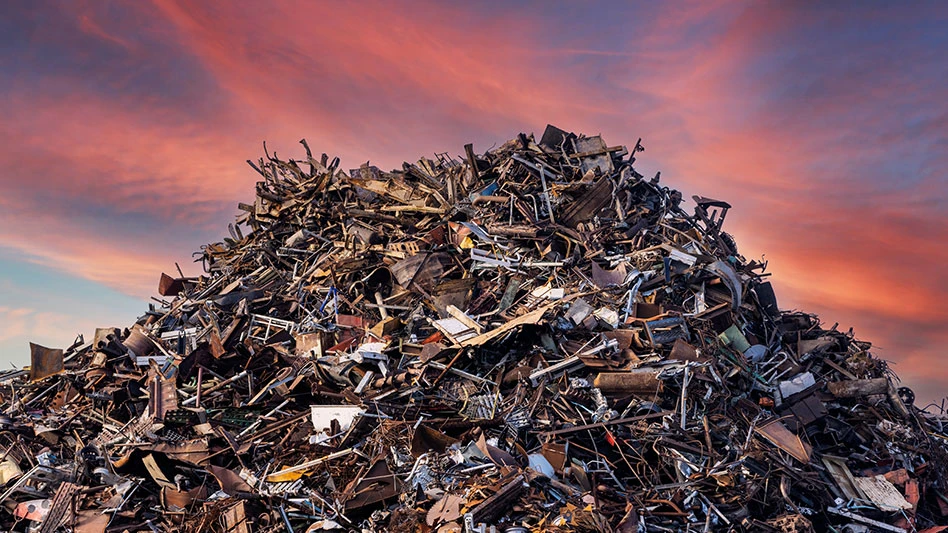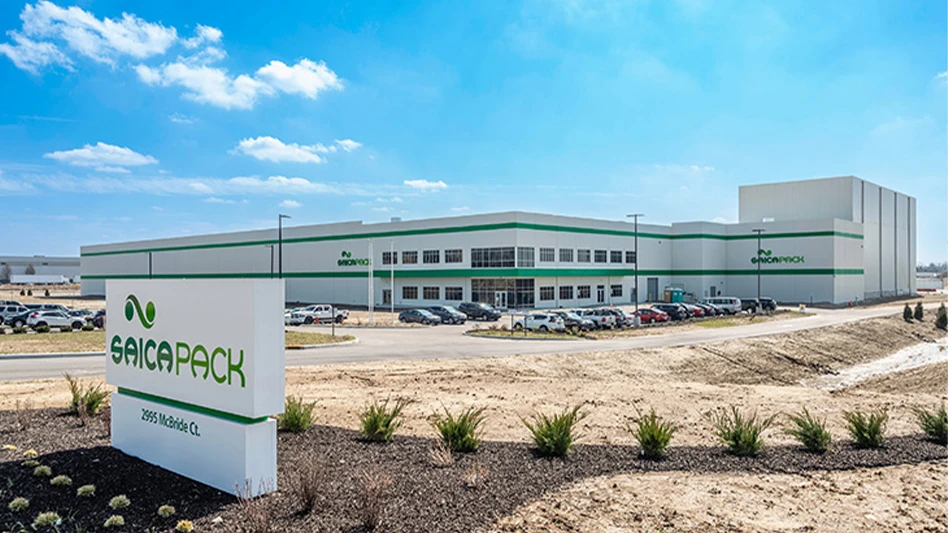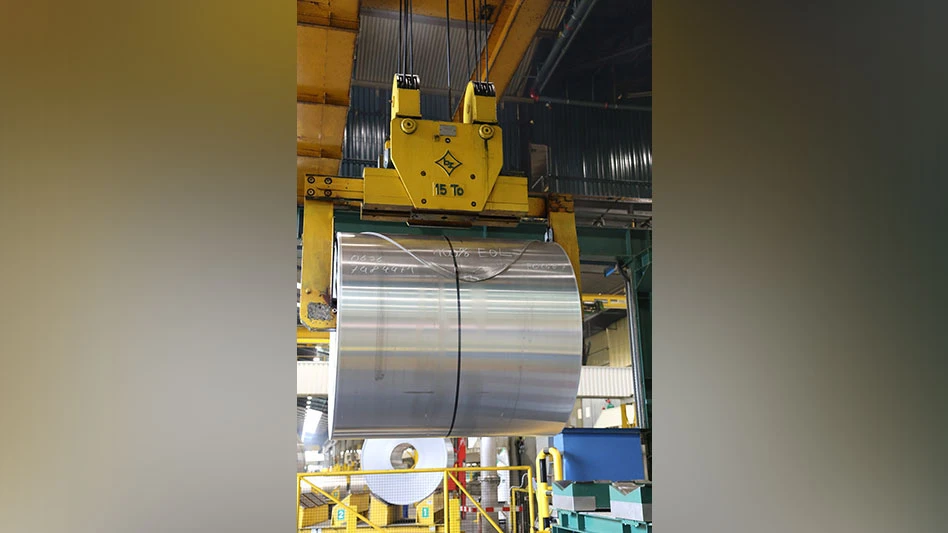The practice of crushing and recycling concrete and asphalt has flourished because it can save and make money for contractors.
Often, the savings come in the form of holding down or largely eliminating hauling costs when crushing is on site. Money can be made when materials are re-sold after being processed.
But even though the economics of aggregates recycling have proven worthy of contractor attention, that doesn’t mean that profit margins are wide enough for any and all applications.
For recycling to make sense, contractors have to know their end markets, do some calculations relating to any given project and use the right equipment to get the job done. Following are snapshots of a couple of different crushing firms and some of the decisions they have made to make concrete and asphalt crushing effective and profitable.
Have Crusher, Will Travel
"We’ll go just about anywhere to crush a minimum of 25,000 tons of concrete or asphalt rubble, demolition debris, limestone; even slag in steel mills," says Scott Weber, vice president of Weber Sand & Gravel Inc., Lake Orion, Mich.
|
|
"On the average, we move our entire operation about once a week: crusher, screen, conveyors and stackers," notes Weber. "Most of our business is in Michigan, northwestern Ohio and northern Indiana, but we are bidding jobs right now in Florida, Alabama and Arizona," he adds.
Portability is thus a key factor for Weber’s operation. "To move that often, go that far and still be competitive, you need equipment you can move quickly and economically, and your production has to be extremely efficient and dependable," he remarks.
Weber Sand & Gravel Inc. was established in 1946 by Scott’s father and mother, Jack and Gerry Weber. The company has been family owned and operated ever since. Scott credits the company’s success to family effort and having quality equipment that is right for job. Scott’s brother, Greg, also a vice president, operates the sand and gravel business. Gerry Weber is president and still very much involved in the company.
"Dad and I used to work together a lot in the contract crushing operation," Scott Weber notes. "There were times when he’d object to my bidding a certain type of job or bidding at a certain price and say it wasn’t worth it; we just couldn’t make a profit on it. I’d insist that we could. Finally he’d usually give in; we’d get the job and do just fine."
That doesn’t mean pre-job calculations go out the window, Scott is quick to note. "Don’t misunderstand—we’re not always the lowest bidder. But when we are underbid and somebody else gets the job, I don’t fret over it because so often the customer ends up being disappointed and we get his next job. Once we get a customer, we keep him," he adds.
"If you make customers happy, the word gets around," Scott continues. "We’re known as being very professional. That’s the result of three key factors. First, our family name and reputation is on the line with every job; so we always do what we say we will. We guarantee price, tonnage, specifications and schedule. Secondly, we don’t just stand around and supervise. We do the work, and nobody works as hard or efficiently as the owner does. Thirdly, we use top-quality equipment designed for our needs. That’s absolutely essential."
The Webers have worked with Grasan Inc., Mansfield, Ohio, on their system design. "For our contract crushing operation, we have a complete system engineered and manufactured by Grasan: KRH1515 primary impactor plant, 7-feet by 20-feet screen plant, return conveyor, radial stackers and generator and controls housed in a 30-foot trailer," says Scott. "Everything is road portable. The impactor itself is a Hazemag APPH type with the automatic hydraulic cylinder system for greater crushing capacity, smoother operation and more uniform products. We can stack crushed materials in standard conical piles, or we can stack in windrows with a telescopic radial stacker for a more uniform material mixture," he remarks.
"We can crush as much as 900 tons per hour of limestone or concrete rubble down to one inch by three inches, or 500 tons per hour of asphalt rubble down to 5/8-inch minus while using only two blow bars instead of the possible four," he continues. "We can tear the plant down, blow it clean with compressed air, move it to a new location within a reasonable distance, set up and be crushing again in 12 hours or less, as a rule. That comes from two things: one is practice; the other is the custom design."
Certain hardware choices have helped the Weber plant maintain its portability. "We had Grasan engineer both the crushing plant and screening plant with quick-disconnect pins instead of bolts for almost anything we have to dismantle or take off for over-the-road travel," says Scott. "That saves a lot of time and hassle."
Scott says the pins offer several advantages. "It takes longer to work with bolts, the threads get worn after awhile, and it’s easy to lose a nut or washer. The pins are quick, simple and chained to the equipment so you won’t lose them. Grasan also designed a dust cover for the screen plant to make the whole operation cleaner and keep people in neighboring areas happier."
Scott singles out his supplier for recognition in several areas. "Grasan is easy to work with and gave us exactly what we need. They aren’t the cheapest—I don’t want the cheapest. The cheapest is actually the most expensive in the long run," says Scott, referring to repair and service costs and down time losses that can be created by inferior equipment. "Our Grasan system is six years old. We’ve crushed about four million tons so far and all the equipment still runs extremely well with simple maintenance. That’s crucial in a business where downtime is often the most important factor in profit or loss."
While the Grasan plant is used mostly for recycling applications, Scott says it can cross over into work with other materials as well. "[Most observers agree] a primary impactor is better than a jaw for crushing concrete and asphalt. But we’ve found it better for limestone, too. The impactor is much faster, more efficient and, therefore, more profitable, even considering its somewhat higher maintenance cost. We use our jaw and cone crushers only if a customer has extremely hard rock.
"Custom crushing is a tough, competitive business," Weber continues. "But you can do well if you work smart and know your markets, work hard at being efficient, persevere to build up your customer base and get the best quality equipment you can so the hard work, smart work and perseverance can pay off."
IN THE AIR
One aspect of the huge 4,700-acre project taking place at the former Stapleton Airport in Denver (see "The Urban Quarry," C&D Recycler, Nov./Dec. 2002), which is being led by CMRA member Recycled Materials Co., Arvada, Colo., is the use of mobile crushing equipment at the site.
According to Recycled Materials Co. president Mark Wachal, the majority of the estimated 6 million tons of concrete and asphalt from runways, taxiways and concourses will go through a high production crushing system anchored by a large jaw from Metso Materials. After being crushed in the jaw, material can then be passed through secondary and tertiary crushers.
That stationary system is at the north end of the sprawling, seven-square-mile site. There are times, though, when recycled base or a similar product is needed at the south end of the facility. It makes no sense for a haul truck to take material all the way from the south end to be processed at the north end. Instead, Recycled Materials Co. uses one of its five Austrian-made mobile crushers purchased from Crushtek LLC, Atlanta, to process concrete and asphalt generated at that end of the site, thus saving on trucking costs.
"When it looks like we will need some road base on the south end, we develop pods and dump the rubble there," says Wachal. "We move the pods around as need be. Then we move the Hartl mobile crushers in to make aggregate base course and use it down there at the south end, where redevelopment has already began. We are making a 3/4-inch minus product."
Recycled Materials Co. mobile crushers are all impactors, and are complemented by a 5-feet by 14-feet mobile screen for product sizing. "You can’t beat the mobile’s versatility and ease of movement to do small quantity jobs," says Wachal. "And when we need high production, we move two of them in tandem. We are able to do 250 tons per hour that way, depending on what we are feeding them."
MAGNETS WITH A PURPOSE
Metal making its way too far into the crushing process can cause grief and downtime, with problems ranging from expensive equipment damage to substantial productivity losses.
Guarding against this is routine practice for concrete crushers, who are used to seeing a steady stream of steel reinforcing bar in their material stream. Interestingly, some of the methods sharpened by recyclers recently came into play for a primary aggregates maker.
Aggregate manager Max Pfaff at American Asphalt and Paving Co., Shavertown, Pa., worked with David Heubel of Eriez Magnetics, Erie, Pa., to fend off the negative consequences of damage from unwanted metals.
American Asphalt and Paving, located in the anthracite region near Wilkes-Barre, Pa., operates two quarries, in Chase and Keystone, that are responsible for producing nearly a million tons of aggregate. The Keystone facility produces 460,000 tons of this aggregate for one of the company’s four asphalt plants.
Located on the site of an exhausted coal mine where coal was produced using both underground and surface mining techniques, the Keystone operation removes sandstone from between the mined out coal veins for aggregate production.
The Keystone quarry contains considerable amounts of debris from previous mining operations. The debris consists of scrap metal, old drill rod pieces and lost or broken drill bits, etc. Management quickly realized they had overlooked the importance of protecting the plant’s equipment when building the new secondary or cone side of the plant.
Management looked at and priced all types of magnets and metal detectors and tried to study the benefits of each. They considered both permanent and electromagnet types, but whatever they selected, it had to be self-cleaning. The decision had to be made quickly. Recommendations and pricing were gathered from the Internet, trade magazines and local vendors.
Tom Brittain of Penn Quip Inc., an Eriez Magnetics representative, went to American Asphalt’s site to explain the advantages of his company’s equipment.
Eriez ultimately supplied an oil-cooled, suspended electromagnet separator, which is self-cleaning. Additionally, an Eriez Metalarm metal detector was installed in the chute to assure purity of the aggregate.
A collection drum was placed opposite the electromagnet to handle the tramp metal scrap removal. After being convinced the company had a good return on its investment, the company bought the same magnetic system for its Chase facility.

Explore the March 2003 Issue
Check out more from this issue and find your next story to read.
Latest from Recycling Today
- Steel Dynamics cites favorable conditions in Q1
- Hydro starts up construction in Spain
- Green Cubes unveils forklift battery line
- Rebar association points to trade turmoil
- LumiCup offers single-use plastic alternative
- European project yields recycled-content ABS
- ICM to host colocated events in Shanghai
- Astera runs into NIMBY concerns in Colorado







